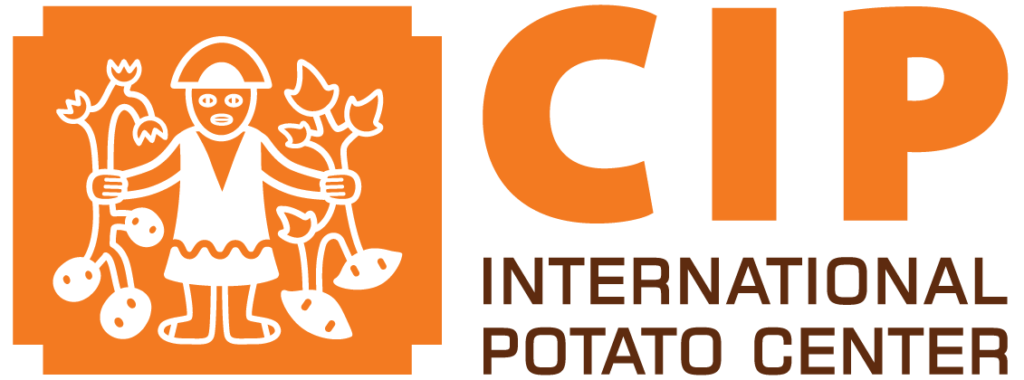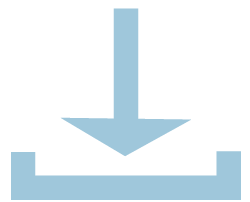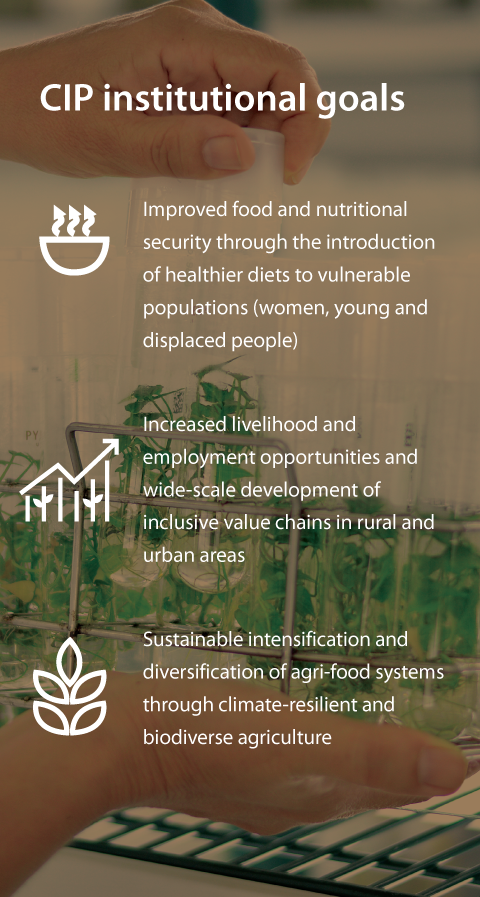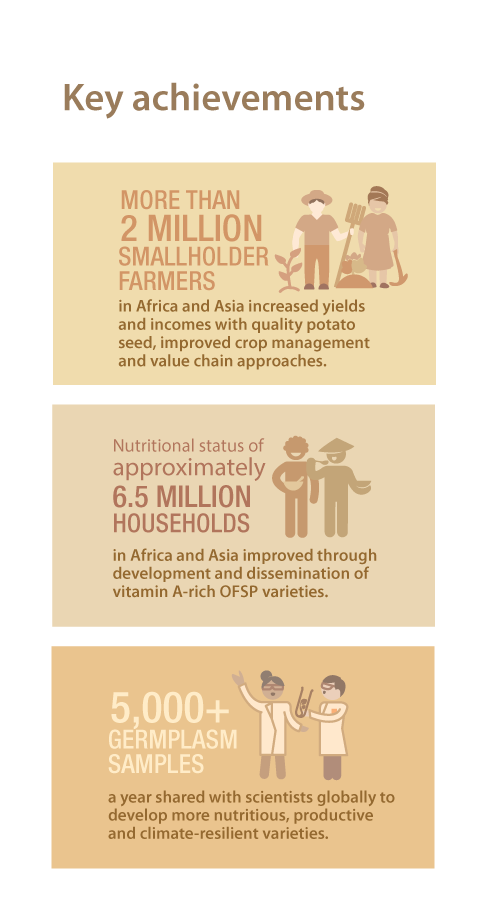Funders
The International Potato Center gratefully acknowledges the countries, organizations, partners and individuals that supported its agricultural research for development in 2019. We also thank all the funders that globally support our work through their contributions to the CGIAR system.
- 2BLADES Foundation
- African Agriculture Technology Foundation
- African Development Bank
- Agencia Española de Cooperación Internacional
- American Institutes for Research
- Australian Centre for International Agriculture Research
- Austrian Development Cooperation
- Bill & Melinda Gates Foundation
- Biotechnology and Biological Sciences Research Council
- CGIAR Genebank Platform
- CGIAR Platform for Big Data in Agriculture
- CGIAR Research Program on Climate Change, Agriculture and Food Security
- CGIAR Research Program on Policies, Institutions, and Markets
- CGIAR Research Program on Roots, Tubers and Bananas
- CGIAR Trust Fund
- Compañía Minera Poderosa S.A.
- Department for International Development, United Kingdom
- Deutsche Gesellschaft für Internationale Zusammenarbeit
- European Commission
- Food and Agriculture Organization of the United Nations
- Gansu Agricultural University
- Global Challenges Research Fund
- Global Crop Diversity Trust
- Government of China
- Government of India
- Government of the Federal Republic of Germany
- Harvest Plus
- International Center of Insect Physiology and Ecology
- International Development Research Center
- International Food Policy Research Institute
- International Maize and Wheat Improvement Center
- Irish Aid
- McCain Foods Limited
- McKnight Foundation
- McLaughlin Gormley King Company
- Ministry of Agriculture and Irrigation, Peru
- Norwegian Development Cooperation
- Organization of the Petroleum Exporting Countries Fund for International Development
- Programa Nacional de Innovacion Agraria, Peru
- Rural Development Administration, Republic of Korea
- State government of Haryana, India
- State government of Odisha, India
- Swiss Agency for Development and Cooperation
- Syngenta Foundation for Sustainable Agriculture
- United States Agency for International Development
- World Bank Group
Finances
As a CGIAR research center, much of CIP’s research is conducted through CGIAR Research Programs. Funding for those programs, and for bilateral projects, comes from public and private organizations, governments and foundations across the globe. The Center also receives generous in-kind support from national partners and international collaborators.
CIP gratefully acknowledges the countries, organizations, partners and individuals that supported its agricultural research for development in 2019. CIP also thanks all the funders that globally support its work through their contributions to the CGIAR system. Without their intellectual and financial support, CIP could not have made the contributions to better lives reported here.
Total revenue and expenses reported by CIP in 2019 were USD 63.5 and USD 65 million respectively, reflecting a deficit of USD 1.5 million. On 31 December 2019, CIP’s reserves were USD 15.2 million, representing 82 days of expenditure – within CGIAR norms – compared to USD 16.7 million (92 days) on 31 December 2018.
CIP’s full financial report for 2019 is available online.
Revenue
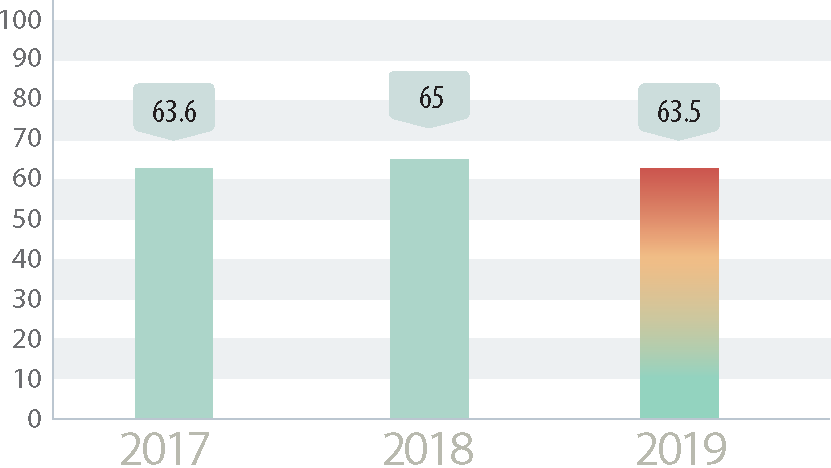
Revenue
Liquidity and financial stability

Reserves
